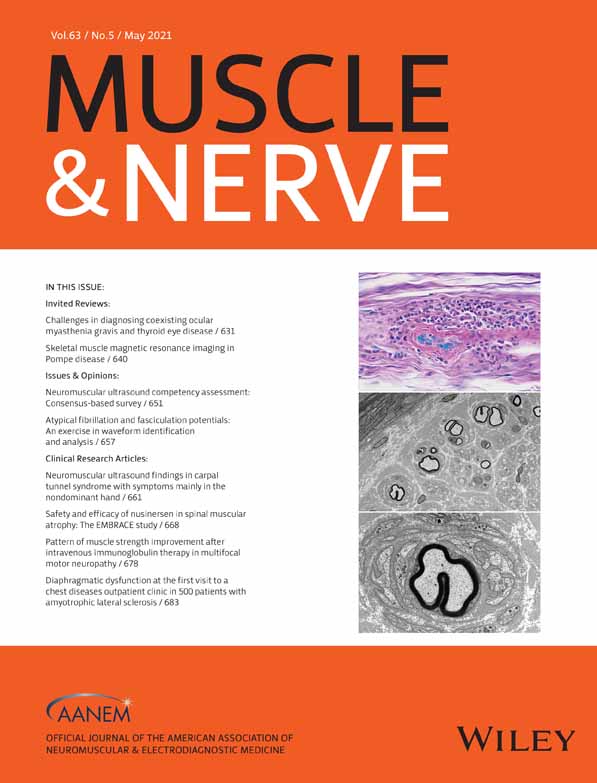Developing outcome measures of disease activity in pediatric myasthenia
Abstract
Introduction
Pediatric myasthenia encompasses juvenile myasthenia gravis (JMG) and congenital myasthenic syndrome (CMS), which are chronic disorders with fluctuating symptoms amenable to medical therapy. Disease activity and treatment response may be difficult to assess, but, unlike adults, outcome measures have not been developed in children.
Methods
The study was performed in children (0-18 years of age) at the neuromuscular center of a pediatric hospital over a 3-year period. Patients were recruited prospectively as part of their routine clinical care. Demographic data, diagnosis (JMG/CMS), and the following scales were recorded at each visit: Myasthenia Gravis Foundation of America (MGFA) class, Myasthenia Gravis Composite (MGC), and Pediatric Myasthenia–Quality of Life 15 (PM-QOL15).
Results
Thirty-three patients (24 JMG, 9 CMS) were included in the study, 22 had two or more visits. We established known-groups validity of the MGC and PM-QOL15 scores as compared with the MGFA class. To establish concurrent validity, we constructed a receiver-operating characteristic curve and calculated threshold values of MGC and PM-QOL15 with optimal sensitivity and specificity for identifying a patient with more severe (MGFA III or higher) disease. Finally, we demonstrated the concordance between the MGC and PM-QOL15 by their statistically significant positive Pearson and Spearman correlations.
Discussion
Our study suggests that MGC and PM-QOL15 are important disease outcome measures in pediatric myasthenia that are easy to administer and provide reliable assessment of disease activity in the clinic setting. Further studies are needed to validate their use for pediatric clinical research trials.
CONFLICT OF INTEREST
P.S.G. has received consulting fees from CVS Caremark, Catalyst Pharmaceuticals, Sarepta, and PTC. The remaining authors declare no potential conflicts of interest.
Open Research
DATA AVAILABILITY STATEMENT
The data that support the findings of this study are available from the corresponding author upon reasonable request.




